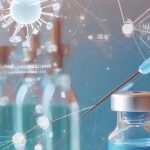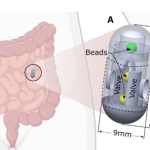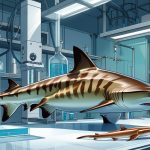Imagine being able to regrow your head, your spinal cord, or even your entire body. For planarians—tiny flatworms—this isn’t science fiction; it’s biology.
The 2024 paper by Levin et al. provides a comprehensive examination of how planarian regeneration functions as a living model of anatomical homeostasis. The study goes beyond stem cells and tackles how biological systems retain and restore complex anatomical patterns.
What is Anatomical Homeostasis?
Anatomical homeostasis refers to the ability of an organism to maintain or restore its correct body structure, even after severe injury or partial loss.
In planarians, this is possible due to:
- Pluripotent adult stem cells (neoblasts)
- Bioelectric signaling networks
- Distributed pattern memory across tissues
The research suggests that anatomy is not hardwired, but dynamically maintained by physiological and electrical feedback systems—a revolutionary concept in regenerative biology.
Highlights from the Study
- Planarians store and interpret pattern information to regenerate precise structures (head, tail, organs)
- Bioelectric signals—like voltage gradients—encode positional information guiding regeneration
- Perturbations to bioelectric circuits can change regeneration outcomes (e.g., two-headed worms)
- Even when fragments are rotated or damaged, the body plan is restored with remarkable accuracy
- The system corrects developmental anomalies, pointing to an active pattern surveillance mechanism
This makes planarians a robust, real-time model of body-wide anatomical integrity.
Why Planarians Matter in Regeneration Research
- Regenerate entire organisms from fragments
- Continuously replenish all cell types using neoblasts
- Maintain body patterning for decades in captivity
- Allow for real-time studies of bioelectric, genetic, and epigenetic controls
- Provide insight into decentralized control mechanisms in biology
Unlike traditional models, planarians integrate signals beyond genetics, involving physiology, environment, and neural cues.

Bioelectricity: The Hidden Code of Shape
One of the most groundbreaking concepts in the paper is the role of bioelectric signaling in regeneration:
- Electric fields guide where heads, tails, and limbs regenerate
- Modifying ion channels or voltage states can reprogram anatomy
- This implies a computational layer in tissues that encodes body structure—almost like biological software
The implications? In the future, we might trigger regeneration in humans using non-genetic, bioelectrical interventions.
Implications for Human Health
- Limb regeneration therapies
- Organ engineering and repair
- Understanding tumorigenesis as a breakdown of pattern control
- Bioelectric diagnostics for developmental disorders
- Neural regeneration via reactivated anatomical memories
This study moves us closer to programmable regeneration, where we no longer just heal wounds—we restore correct anatomical structures.
Conclusion
Planarians are not just weird flatworms—they are nature’s blueprint holders, demonstrating how a living system can store, restore, and adapt its shape. With advances in bioelectric science and regenerative medicine, the lessons from planarians may one day help humans unlock whole-body healing.
Reference
Levin, M., Pietak, A. M., & Bischof, J. (2019, March). Planarian regeneration as a model of anatomical homeostasis: recent progress in biophysical and computational approaches. In Seminars in cell & developmental biology (Vol. 87, pp. 125-144). Academic Press. https://doi.org/10.1016/j.semcdb.2018.04.003






